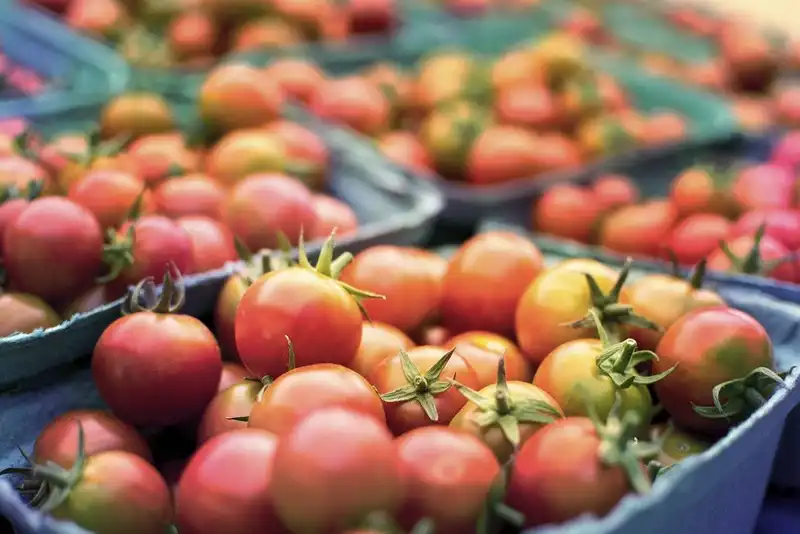Why Food Security is So Important
What is Food Security?

Food security pulls together socio economic elements and cultural measure to create safety within food systems. The FAO and World Food Summit (WFS) have established principles to ensure access to safe and nutritious global food.
The principles that enable high levels of food security are the following-
- Availability- This includes production, storage, importing and food aid available for local or national emergency.
- Stability- Food instability is pivotal and may be triggered due to season shifts or an economic crisis which is usually cyclical.
- Access- Access to quality food can be impacted due to insufficient amounts, higher prices, financial poverty or rural communities.
- Consumption- Food will have high nutritional standards and meet different preferences at the same time.
The United Nations reports that 1 in 9 individuals in the world suffers from malnutrition. That equates to 815 million people in the world that are malnourished. By 2050, the number is expected to reach 2 billion if things don't change.
Causes of food insecurity includes-
- Soil depletion
- Water shortages
- Air pollution
- Climate change
- Population explosion
- Economic crisis and governance issues
How is Food Security Achieved?

As food prices rose from 2006 to 2009, hunger increased and a record number or people became malnourished. It took two decades, and impact to food agriculture, before food security measures were implemented. Food safety is now a key topic in international development.
A systematic review was put in place to oversee and evaluate food security interventions. Programs focused on increasing food production, developing stronger values along the food supply chain, market reform and improvements in food security throughout developing countries.
Each country require their own set of practices but having the review in place provided more guidance via case studies with specific results. For instance, some reviews have shown some efforts to be very successful like. Reduction to profit losses and increasing food production with genetic crops were major success that benefited low income consumers and farmers at the same time.
Where is Food Safety Needed?
Over 870 million people across the globe don't have access to enough safe, nutritious food to eat. With those statistics in mind, the USDA supports global food security to provide food for millions of hungry people and sustain economic growth in these areas. This is done through a combination of market information, statistics and applied research.
The long term impact of economic growth in underdeveloped nations helps the United States to prosper as well. As countries have more food secure it expands food production markets in America. U.S. agricultural exports to developing countries like Sub Saharan Africa have grown exponentially. From 2009-2011, the meat and poultry within Saharan Africa saw an increase of 180 percent.
To meet ongoing need driven by population growth, the United Nations anticipates food production will have to double in developing countries to account for the demand.
7 Ways Food Security Impacts Business

Economics like supply and demand is important for all business owners. These seven reasons capture how food security impacts businesses.
- Pricing- Supply and demand curves have a substantial impact on how items are priced. A low supply can be a factor in price increases where a lack of demand will cause a decrease in price. Having the right price point takes finessing of the equilibrium quantity.
- Competitiveness- If a company loses access to its supply while a competitor remains fully stocked it can cause consumers to shift allegiance. Cutting prices is also a competitive measure rival businesses use to increase demand.
- Expansion- The ability to expand a business is reliant on the supply and demand curves. Higher demand provides opportunities for growth with increased hiring to meet product demand. A consistent balance must be in place for expanding methods to be maintained.
- Marketing- A marketing campaign can drive up demand for a product, which in turn gives cause to increase the price. Marketing creates demand and demand increases supply needs.
- Inventory- Managing inventory is crucial to understanding the supply and demand needs for the marketplace. Oversupply or undersupply is influence by the demand for a product. It influences the profit margins for companies as well.
- Financing- If supply and demand are strong, they can attract investors to a company. Financial assistance can help a business expand. However, if demand is low it can make it difficult to attract outside financing causing companies to struggle financially.
- Salaries- When supply and demand are high, the extra revenue can be sourced into areas like employee salaries. A pay increase is one way to keep turnover low. It can influence a stronger work ethic and increase business.
Initiatives of Food Safety
The food security Initiatives are goals used to meet healthy food needs across the globe. They nurture a more inclusive environment for food insecure families.
The focus is to help them to grow, cook and eat more beneficial foods. Food security initiatives also offer a wider array of opportunities that are educational and offer community engagement all centered on food needs.
Programs are designed to flush out and treat the causes of food insecurity. They are meant to build up communities and provide access to healthier, natural food options.
8 Reasons Why Food Security is Important

Food security is important because-
- Dependency on food is obvious, but considerations still need to be placed on who is benefitting from this need and who has to pay.
- The United Nations Universal Declaration of Human Rights states the right to adequate health and well-being. This includes food, housing, clothing and medical care.
- For a community to be self-reliant it leans on the basic element of food. All aspects of food economy enhances the community through jobs and cultural enrichment.
- The food systems in place for food distribution usually travel hundreds of miles before reaching their destination. If excessive transportation is integrated it can cause vulnerabilities to appear that don't account for product freshness.
- When shopping at the store it is assumed that the food is reliably safe. Stocked grocery shelves make it appear that food systems are well developed. However, risks and long-term costs aren't evident. For example, if food security is not in place imported products could contain harmful crops that no one would be the wiser of.
- Jurisdictions need to be able to feed themselves. Being at the mercy of others can lead to suffering. All around the world, using food as a weapon is becoming more common.
- With so much automation in place, the vital skills of harvesting, growing and preserving food are being lost. In North America less than 2% of farmers are left to teach the blueprint of techniques.
- Consumers are growing more concerned about food-health connections. The safety of the foods people eat is now a global topic. This includes the use of additives, hormones or even genetically modified organisms and their links to disease.
What Does Food Security Look Like in the Future?
The United States food system is made up of a global agricultural chain. Remaining a leader in agricultural exports will depend on the future of food safety.
Food security remains an scarce in parts of the world with nearly 1 million mouths going hungry. Here are some of the approaches to be taken towards securing food systems in the future.
Supporting Sustainable Agriculture
Farmers know better than anyone what changes need to be implemented to their food system sectors. Shifting rainfall and prolonged drought can bring problems to crops like pest infestation and disease. Because the agricultural system is linked to feeding the nation its imperative that food companies look for sustainable methods in the way food is grown.
Managing Food Waste
Reducing food waste requires guidelines to implement the recycling of waste into more productive areas. Tracking landfills and finding out the greatest areas of food loss are some of the challenges being met.
Federal guidelines that address the management of landfills are also considerations. The Department of Agriculture and the Environmental Protection Agency, working together will help states reduce this source of food waste.
Nutrition Education
Expanding nutritional education programs and resources will help communities to make more informed choices in the foods they eat. Funding and staffing have been obstacles in providing these resources. However, as the needs rise food distribution sites are now playing a role. Food being distributed reflects the message of nutritional education.
Understanding Food Security
- Causes of food insecurity include soil depletion, water shortage, air pollution, climate change and more.
- Global food security was created to provide food for millions of people in under-developed countries.
- The United Nations works consistently to keeps global food security in check for household food to be edible and nourishing.
- Supporting sustainable agriculture, managing food waste and advancing nutritional education are some of the food security methods of the future.





